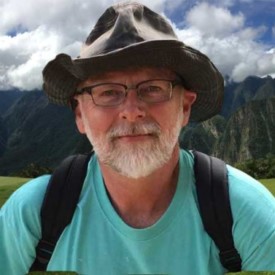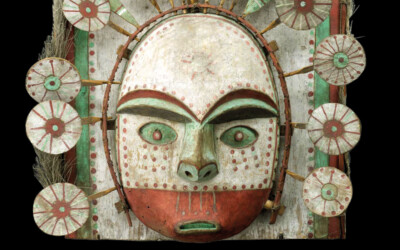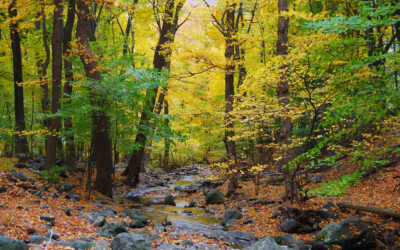In this piece I delve a little into my personal journey to shamanic practice and why I see shamanism as an antidote to much of the malaise we feel. At the end of this piece I offer you the most concise list of “shamanic core values” I’ve ever come across, and a practical and potent shamanic practice.
I came to shamanic practice out of life as an artist. I was a playwright for 15 years, living in the kind of splendor to which artists are accustomed: living in the three-room upstairs apartment across from the crack house where, nightly, large men in long leather coats that concealed sawed-off shotguns stood stoically. I started my workday at dusk by risking bodily death sitting on my crumbling, no-railing balcony overlooking the used car lot, drinking Yukon Jack and marveling at the way the slanting orange light washed with such innocence over the curled hair of the hookers walking by below. I’d write deep into the night and sleep deep into the day, going for weeks without talking to people, then do whatever I could to make a few bucks, and repeat. My days were spent on one purpose: opening my imagination wider, and letting in whatever would come in. It is, as all artists, monks and shamans know, terrifically lonely work, charged with the giddy precipice-power that comes from actively courting insanity.
As I began to encounter shamanic books and then teachers, I realized that my writing process was not like other writers I knew, and it was as shamanic as it could be. I put on recorded drumming to write to, and it sent me into an otherworldly place where people came and talked to me and told me what to do next. I called them “characters in my play,” and they were usually human. Later they became spirits, often not human (or perhaps more than human). As I tried to put these spirits on stage, my plays became progressively weirder and less producible by anyone but myself. It’s just very difficult to describe in the stage directions: “The Kuhem Men are part man, part hawk and they speak in a guttural whisper that sounds a little like rhythmic singing heard just out of range of the firelight, late at night in the woods.”
At a certain point I had to admit that my playwriting life was over and I was morphing into something else.
In our culture, opening the imagination is a radical act of disobedience to the prevailing powers. The last thing the orthodox Church wants you to be is imaginative. It gives you a brief list of acceptable images – white dove, angel (Caucasian), Ted Neely Jesus and, on good days, grapevine. But it warns you that to open the imagination to images outside the accepted list is very dangerous.
The church fears imagination but science dismisses it as playtime and nonsense. School gives lip service to the imagination but education is about training us to become enfleshed machines, and imagination is valued only as it applies to money making.
So we grow up, each of us in this culture, with heavy restraints on what may be the human being’s primary creaturely power: imagination. We grow up creatively skewed and malformed like those miniature trees pruned to droop and weep because we think they are beautiful like that.
The suppression of our innate human power points us right to the world we have built: the “LOL-Nothing-Matters-Fuck-Off-Binge-Watch” world in which what Kim Kardashian says matters to people.
My point in this darkly painted picture is this: if you feel disconnected from Spirit, from your imagination, from joy, it’s not you. You’re living in a time where they’ve stopped training your spiritual imagination, and that results in malaise.
The imagination is the meeting ground between the unfathomable, ungraspable, untamable, un-nameable mystery of creator/creation and the human. The imagination is the banquet table at which God and human meet to feast with one another. There is no meeting with God except through the translator of the human imagination. The raw, immense power of the divine, the 10,000 languages it speaks at once, can only be stepped-down and translated through the tool of the human imagination.
This is why shamanic practice is such a useful spiritual path and why it is such a powerful antidote to the soul-shrinking powers perpetrated on us by the modern industrial machine mind. It’s why shamanism is an antidote to delusional, xenophobic, conspiracy theory laden paths we call “religious conservativism.”
Shamanism is the path of opening the sacred imagination. It is the invitation to the overflowing banquet table of creation. Shamanic practice is just that – a way of being and of practicing, not an enforced system of believing abstract ideas or stories.
(So-called “conservative”) religion begins by progressively containing and limiting your wild sacred imagination with, “You must believe only these few things or it’s damnation for you!” Shamanism begins with opening up the sacred imagination and preparing you to negotiate with sheer wonder. People uneducated in shamanism sometimes think it is about fa-la-la fantasizing, but shamanism is very much like science: it’s based on repeatable experiences that create observable effects in the immediate world.
Shamanism was with us tens of thousands of years before religion, emerging from hunter-gatherers. The shaman’s first job was to locate animals, because if you walked five days in the wrong direction to find them not there, everyone might starve. Modern shamanic practice is really not that different; it’s about locating nourishment and guiding us to it.
Another word about those “religious conservatives”: All of these folks are newcomers to this world. Shamanism predates them by many millennia. People who practice shamanism are actually the ones who are conserving a far older, far more mature theology.
I close with this succinct list of indigenous and shamanic core values and precepts that are also a list of antidotes to modern cynicism and disconnection. This list comes from The Lost Language of Plants: The Ecological Importance of Plant Medicine to Life on Earth by Stephen Harrod Buhner.
While containing numerous variations, themes, and differences these nonindustrial epistemologies do contain a basic framework that is very similar in a number of areas. Most assert that:
At the center of all things is spirit. In other words, there is a central underlying unifying force in the Universe that is sacred.
- All matter is made from this substance. In other words, the sacred manifests itself in physical form.
- Because all matter is made from the sacred, all things possess a soul, a sacred intelligence or logos.
- Because human beings are generated out of this same substance it is possible for human beings to communicate with the soul or intelligence in plants and all other matter and for those intelligences to communicate with human beings.
- Human beings emerged later on Earth and are the offspring of the plants. Because we are their offspring, their children, plants will help us whenever we are in need if we ask them.
- Human beings were ignorant when they arrived here and the powers of Earth and the various intelligences in all things began to teach them how to be human. This is still true. It is not possible for new generations to become human without this communication or teaching from the natural world.
- Parts of Earth can manifest more or less sacredness, just like human beings. A human being can never know when some part of Earth might begin expressing deep levels of sacredness or begin talking to him. Therefore it is important to cultivate attentiveness of mind.
- Human beings are only one of the many life-forms of Earth, neither more nor less important than the others. Failure to remember this can be catastrophic for individuals, nations, and peoples. The other life in the Universe can and will become vengeful if treated with disrespect by human beings.
Practice
A simple, potent shamanic practice that I call, “being with the land.” The core of shamanic world view is that there is more than one world, or the way I like to put it: there are many layers to reality, and the one that our five senses discerns is a very small part of the whole.
The practice: Stand on a piece of land. This may be your backyard, a park, in the wild, or even a parking lot outside your office. Open your imagination, and “see” (feel) a line of connection from your heart to the grass, a tree, a cloud, the sky, the dirt, flowers – to anything nearby not manufactured by humans. Feel (see) this line of connection as a color, perhaps a thread or beam of light. It connects you to anything at all that is “land.” When connected, it “plugs you in” to that cloud, or tree, or grass. And you begin to exchange energy. You send the energy of thanks to it, and you can say, “Thank you.” Or you can say, “You are my Brother/sister/uncle/aunt.” Do this for a few moments – for at least three times as long as you think you should. So, for example, if after one minute you think, “This is sorta crazy, or “I’m bored.” or any other resistance comes up, do it for another two minutes. There will be a point at which you receive an energy back. It may come in the form of an emotion, an image, a message. Muse on that the rest of the day.





Great read… Thank you
Enjoyed the article very much! Thanks!